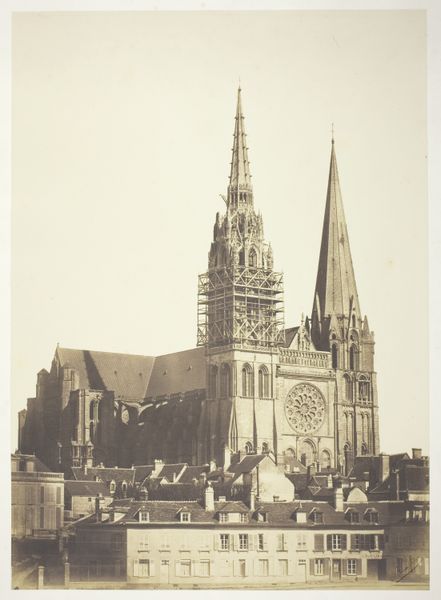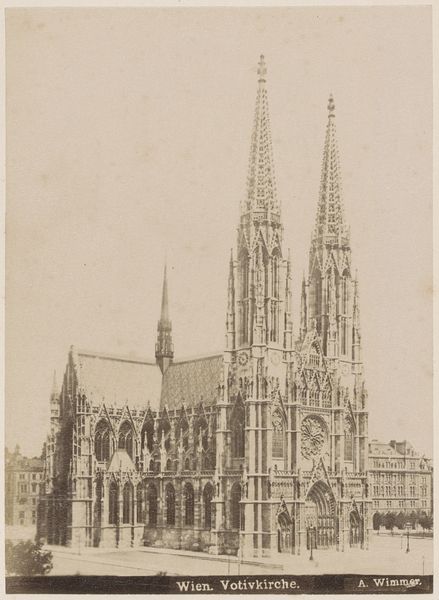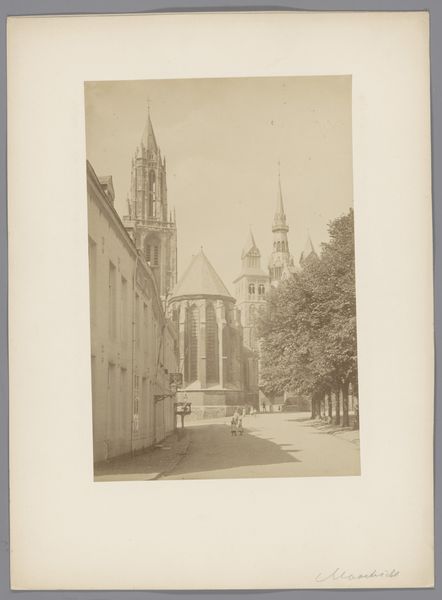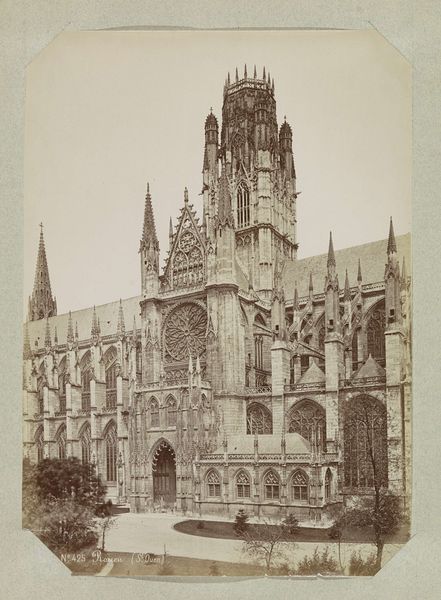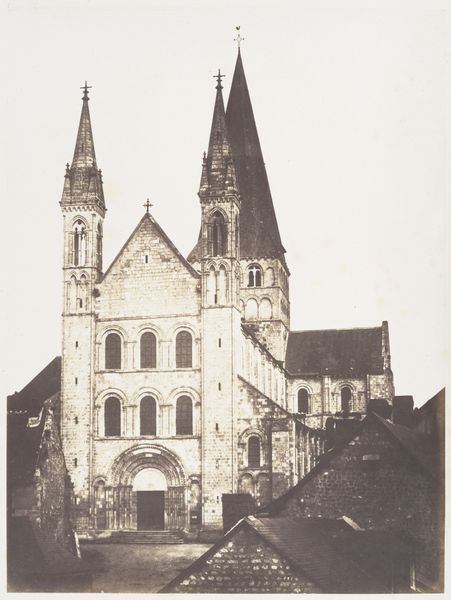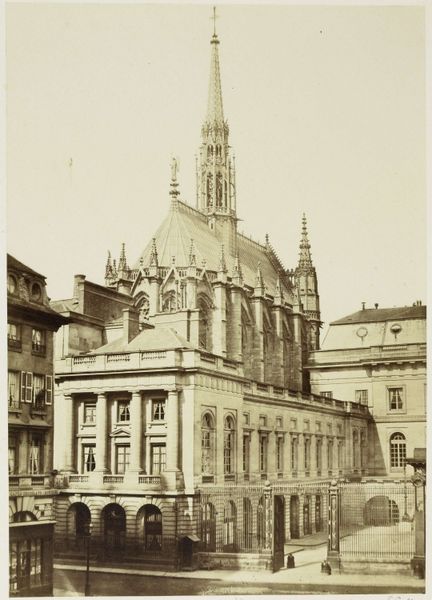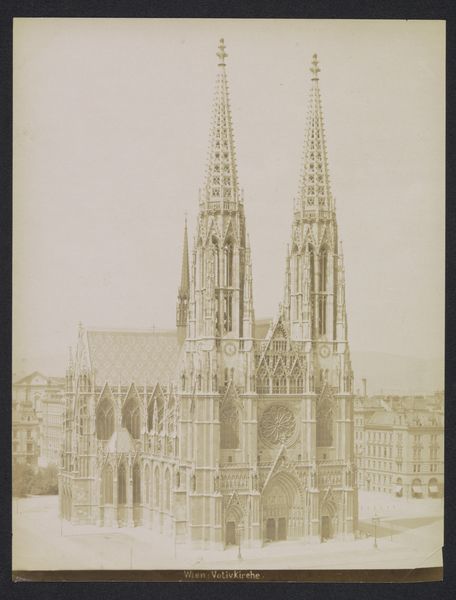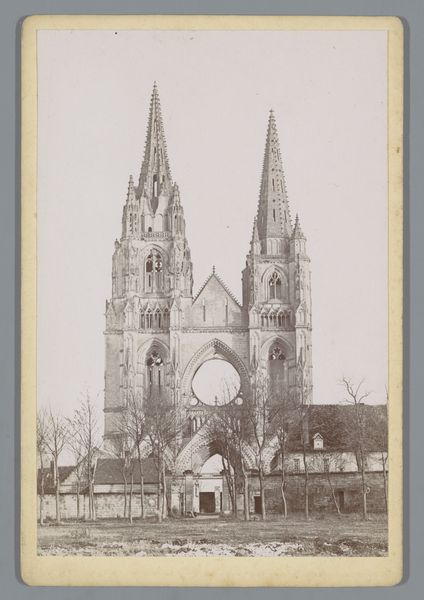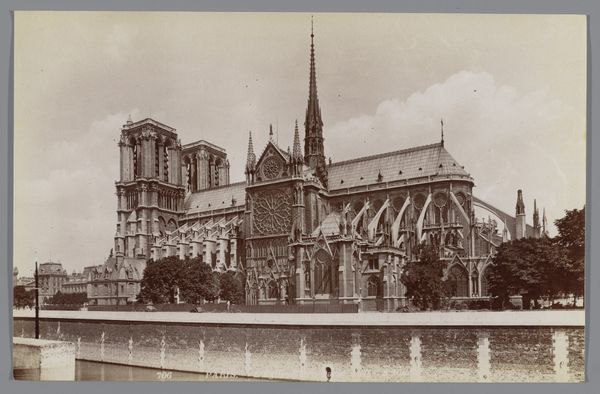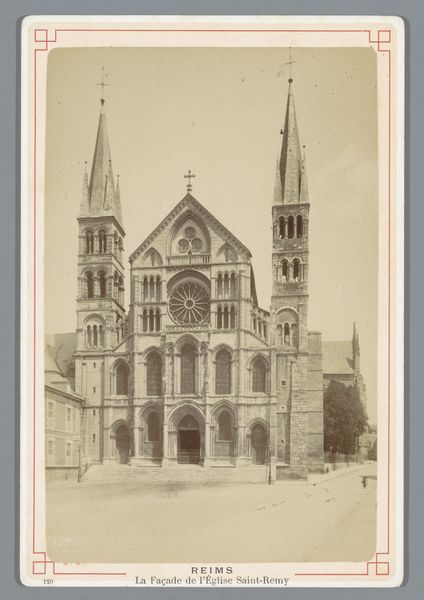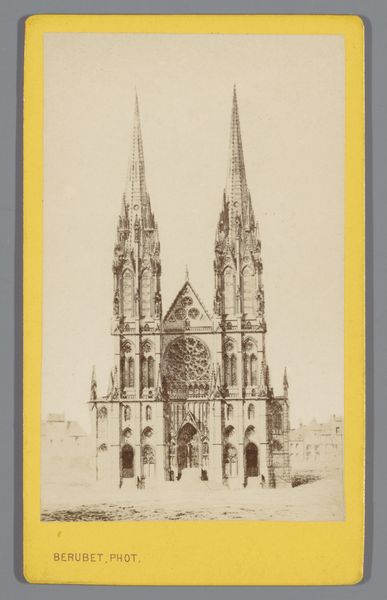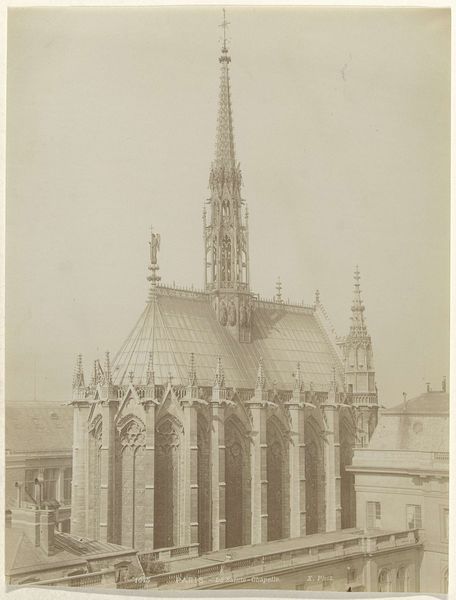
photography, gelatin-silver-print, architecture
#
landscape
#
photography
#
gelatin-silver-print
#
architecture
#
realism
Dimensions: 32.8 x 26.1 cm (12 15/16 x 10 1/4 in. )
Copyright: Public Domain
Curator: We’re looking at “Notre Dame de Bonsecours, près Rouen,” a gelatin silver print from 1852-1854 by Edmond Bacot. It’s quite a stark architectural portrait, isn’t it? Editor: It feels mournful. The monochrome tones, combined with what appears to be a cemetery in the foreground, create a heavy, contemplative mood. Curator: Note the tonal range. The architectural details are crisp and defined, almost relentlessly so. Bacot expertly used the new medium to document the elaborate Gothic Revival architecture. The church’s geometric intricacies are remarkable. Editor: Beyond its architectural precision, I find myself wondering about the role of faith in a rapidly changing 19th-century world. The looming church could symbolize both hope and the rigid social structures of the time, especially considering the political upheaval happening in France during those years. Curator: I understand, but look how Bacot has arranged the composition, how the building becomes a sequence of repeating triangles. From the spire to the smaller arched windows, and gables that line the rooftop; notice, too, the textures rendered on the stone facade. It presents a self-contained aesthetic system. Editor: Fair enough. Still, I’m drawn to how the graveyard disrupts that contained system. The varying heights and weathered surfaces on each headstone speak volumes about individuality and the passage of time, acting as a counterpoint to the rigid, eternal aspirations of the church. Perhaps there’s a commentary on mortality versus the institution? Curator: It's also important to think about what photography meant in the 1850s, and how photography transformed perception and created the new relationship to objectivity. Editor: Absolutely, a debate over "objectivity" versus experience! Looking closely, one can sense that Bacot isn't simply recording a building but also interpreting it and, with the help of cultural context, inviting reflection on broader human conditions. Curator: It highlights that tension very well. Editor: Exactly, and brings together the convergence of these readings—architectural, structural and material—as both form and content, so that the work continues to resonate.
Comments
No comments
Be the first to comment and join the conversation on the ultimate creative platform.
